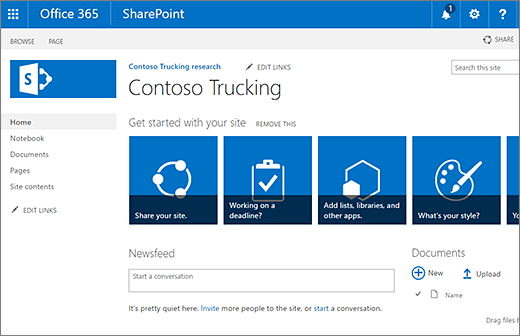Miss the original broadcast? You can watch the full “Private Channels: Real-World Implications and Applications” webinar right here!
Thanks once again to everyone who attended our Private Channels in Microsoft Teams webinar hosted by AvePoint on December 5, 2019. You all had some really great questions that came out of the session. Some we got to, but others we didn’t. As promised, we went through your questions and provided the best input we can.
One thing about Microsoft Teams and Office 365 is that no one person can ever know everything about these services, so the answers below come with a standard disclaimer of “your results may vary.” Please be sure to do plenty of research before implementing any changes we mention and feel free to reach out to your Microsoft customer service manager with any further questions.

One thing we both recommend is to keep up with what’s going on in the Office 365/Microsoft Teams arena on Twitter, LinkedIn, and the Microsoft Tech Community. There are a lot of people that we follow and interact with regularly on these topics; some people are experts in collaboration, some in file management, others in telephony and PBX. There’s a great community out there that can help.
This blog post can help you find Microsoft Teams resources and people. Also, be sure to stay up to date with Office/Teams conferences worldwide. There are plenty of free ones, and meeting these experts in person can be a great thing! The community we have here is a fun one.
Below are your questions, each answered by Matt Wade (MW), Hunter Willis (HW), or Sven Seidenberg (SS). We generally left them in the submitted format, so forgive us if we took liberties with the interpretation. Feel free to comment on this post for more questions or clarification!
Have pressing questions about Private Channels in Microsoft Teams? Check out this post:Click To Tweet
Permissions Topics
Can you limit an external user only to specific Private Channels?
SS: No. Any member of a Private Channel has to be a member of the parent Team. You can think of a Private Channel like the sub-team of the Team itself; you cannot add someone just to the Private Channel. It’s not possible to add them to the team by adding them to the Private channel; you have to add them to the Team first.
Can a Team owner who is not a member of the Private Channel see the list of members of the Private Channel?
SS: No, the Team owner who is not part of the Private Channel can only see a list of the owners of the Private Channel. In addition to that, the Team owner can only see the name and description of the Private Channel. That’s it!
Someone mentioned that a Private Channel can only have one owner maximum. Is that true?
HW: I think I misspoke about this on the webinar. To clarify, there absolutely can be multiple owners of a Teams Private Channel, and the owners of a Team can see all owner(s) of a Private Channel (see screenshots below).


To confirm, if someone is made a member of a Private Channel, will they automatically become a member of the parent Channel and therefore get notifications from the parent Channel?
MW: You can’t be a member of the Private Channel without first being (at least) a member of the Team, which means you’ll get the notifications for any Standard Channels in the Team. The user can always silence those notifications or hide those Channels, though.
Management of Private Channels
What are the limits for Private Channels within a Team? Is that configurable?
SS: Referring to the Microsoft documentation, a Team can have up to 30 Private Channels with each holding up to 250 members. It’s worth mentioning that the 30 Private Channels are in addition to the 200 Standard Channel limit. But I really recommend you not add that many Channels; it may be more useful to review the use case and think of another solution.
How do you gain access to a Private Channel if the owner of the Private Channel has left the company?
SS: Microsoft Teams auto-nominates one of the members of the Private Channel as long as they’re not a guest in your tenant. There’s no information about how the new owner is chosen. Also, it may take a while (e.g., a few hours) until the new owner is nominated. If you don’t want to wait or get a random owner for your Private Channel, you can also add/appoint a member to the new owner through the Microsoft Teams admin center.

Can an existing Channel be converted to a Private Channel and can a Private Channel be rolled back to a Standard Channel?
SS: As of right now, a Private Channel cannot be “rolled back.” The only way to change it would be to delete it. And if you choose this process it’s important to remember that you will also need to get the data for that Channel from its corresponding SharePoint site before it’s said and done. This brings up a more general question about whether Standard and Private Channels can be switched back and forth: no, they cannot. Existing Standard Channels can’t be converted to Private Channels either.
Is it possible to do things like create automated flows for Private Channels/files?
MW: Power Automate (the formerly named Microsoft Flow) is built into various aspects of the Team and Private Channels you’re using, including the files experience in SharePoint which has the “Flow” icon showing in the library toolbar. However, there are no Private Channel-specific actions in Power Automate as of yet.
Administration and Big-Picture
Can you turn off the ability for a member to create a Private Channel?
MW: You have three options for disabling Private Channels:
- Admins can disable Private Channels tenant-wide by Teams policy in the admin center;
- Admins can choose specific users who are able to create Private Channels by Teams policy in the admin center;
- Team owners can disable the ability of Microsoft Teams members from creating Private Channels via the Team settings.
I recently tried to delete a Private Channel but received an error. Why?
MW: Without seeing the actual error code, we can’t really speak to the specific issue you’re facing. That said, deleting a Private Channel should work the same way as deleting a Standard Channel. All the tabs and apps would also be removed. In the case of Private Channels, the associated SharePoint site will also be deleted. You have the ability to restore the Private Channel and its associated SharePoint site within a set period, though.

Does search tie the Private Channel site collection and the parent Team site collection together? Does this behave like the hub site search?
MW: Search is becoming significantly more robust and available through many more endpoints than before. That said, search in Microsoft Teams and SharePoint isn’t really affected all that much by Private Channels. The information in a Private Channel is accessible automatically to anyone with permissions to it, just like, say, a completely separate Team.
Your search results will simply show you relevant hits that match your permissions. If you have access to a Private Channel, searches in Microsoft Teams, SharePoint, and even the Office 365 portal will return results that are relevant to you within your permissions. It’s the same “security-trimmed search” experience you’re already familiar with.
Do messages stay with your mailbox after a Team or Private Channel gets deleted? And what are the ways to access those messages without Microsoft Teams?
HW: Each Team has an Exchange (Outlook) inbox associated with it through the Office 365 Group connected to that Team, and all of that Team’s public chat conversations are synced into a folder within that mailbox. If you delete a Team the Group is also deleted along with the Outlook messages, and thus the chat messages are deleted as well.
There’s currently no published information on this specific topic for Private Channels, and retention is not yet supported. In addition, security and compliance features are very limited at the time of writing. Both of these rely on that synced data function, so it may be a little while before we know for certain how this will work for Private Channels.
Private chat messages are synced to a hidden folder within users’ mailboxes. Deletions of chat messages in Teams are synced, so they’ll be deleted out of user and Group mailboxes once that sync has taken place. (Read this test report from Microsoft Teams community expert Adam Deltinger for more info.)

There are two things that are worth noting here:
1) In response to part of the question above, Microsoft has announced that they’re enabling the ability to see the chat information via Mailbox search results in the next few weeks.
2) AvePoint’s Cloud Backup has supported the hidden folders in Exchange for a very long time.
Does AvePoint backup Private Channels? If so, how do you make sure Private Channel information remains private? What about external vendors running backups?
HW: AvePoint’s Cloud Backup solution enables delegated administration capabilities that let you not only control which application Backup admins can access but also which workspaces/mailboxes they can access as part of this.






